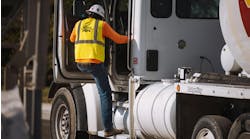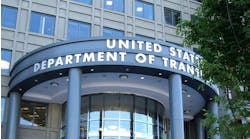Together For Safer Roads publishes guide to help increase seat belt use rates in fleets
Together for Safer Roads recently published “Seat Belt Safety Standard Operating Procedures: How to create and maintain a culture of safety by promoting seat belt safety procedures.” This new guide marks progress in establishing seat belt safety utilization standards as part of TSR’s Fleet Trucking Global Safety Standards Initiative.
The initiative, launched during the 2023 UN Global Road Safety Week, aims to establish operator-focused guidelines and best practices for effective implementation of fundamental safety tools and technologies, including: telematics, automatic braking, airbags, side view mirrors, and seat belts. The first phase has been dedicated to developing "Gold Star" Standard Operating Procedures aimed at increasing driver seat belt utilization rates for fleets.
Through research and stakeholder engagement, TSR identified a need for SOPs that address both human behavior and specific seat belt hardware and technology. The new handbook, based on insights from fleet managers, drivers, and public and private sector leaders, highlights the importance of consistent seat belt use and offers practical guidance to enhance safety measures.
"Today marks a significant milestone in our mission to improve global fleet trucking safety," said Peter Goldwasser, executive director of Together for Safer Roads. “The SOPs outlined in our guide represent a comprehensive framework for promoting and supporting seat belt usage within organizations."
See also: Together for Safer Roads announces new participants in Focus on Fleet Safety Training
Key aspects of the SOPs include:
Training for seat belt compliance: Building a foundation of knowledge and cultivating a culture of safety through comprehensive training initiatives. The SOPs stress the importance of integrating seat belt safety goals into organizational and operational practices. This includes incorporating seat belt usage into driver performance evaluations and utilizing data analytics to measure and enhance compliance.
Seat belt software and hardware selection: Adopting reliable and effective technological solutions to bolster seat belt compliance and monitoring.
Purchasing and evaluating vehicle seat belt safety systems: Ensuring that the procurement of vehicles and their safety equipment is guided by informed, safety-focused decisions. This involves establishing clear criteria for seat belt safety features and assessing the safety records and seat belt technology of potential vehicle models to maintain compliance with seat belt safety regulations.
Seat belt utilization enforcement: Creating mechanisms for compliance while ensuring accountability and timely corrective actions.
Communication for seat belt safety awareness: Establishing clear channels and protocols for disseminating safety information, collecting feedback, and fostering dialogue. To make the necessity of seat belt usage more relatable and impactful, the SOP incorporates interactive training methods and anecdotal storytelling to educate drivers about the importance of seat belt safety.
Documentation of seat belt safety compliance: Ensuring record-keeping, accessibility, and regular updates to all seat belt safety-related documents. The SOPs emphasize the importance of measurement and evaluation in ensuring the effectiveness, efficiency, and impact of seat belt safety initiatives. They outline the role of M&E in accountability, performance improvement, resource allocation, learning, evidence-based decision-making, impact assessment, transparency, risk management, efficiency, and stakeholder engagement.
Within each section, practices are categorized as currently existing practices, industry best practices, and easy-to-implement takeaways, providing fleet leaders with a range of tools to implement in their own management practices.
The initiative's development and subsequent testing are being conducted in collaboration with fleet partners, including AB InBev, Republic Services, The City of New York Department of Citywide Administrative Services, PepsiCo, and Interstate Waste Services. These partners emphasize the collective responsibility of organizations to contribute to long-term improvements in global fleet trucking safety.
“As the operator of one of the largest independently-owned fleets in the U.S. and a network of drivers across the globe, maintaining driver safety, health, and wellbeing is essential,” said Daniel McGuigan, EHS director at PepsiCo. “At PepsiCo, we’re proud of this important collaboration and look forward to continuing to work to advance seatbelt usage and best practices.”



